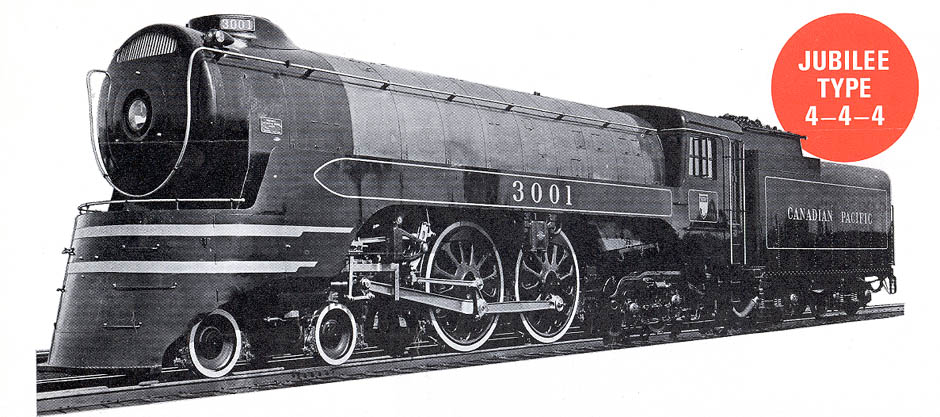 |
|
Collectors' Item 7 by Omer Lavallee The wave of interest in the concept of streamlining, which swept North America in the 1930s, brought in its wake a renewed interest in the raising of scheduled operating speeds for passenger trains. To pull these trains, steam locomotives were specially designed, having high boiler pressures, large driving wheels and roller bearings, making them capable of sustained speeds well in excess of 100 mph. They were designed to harmonize with their trains, having all extraneous piping and other familiar equipment concealed beneath streamlined shrouds. Canadian Pacific's lightweight trains were pulled by its 3000 series locomotives, the engines that introduced the "new look" to Canadian Pacific motive power. In designing them, the Company harked back to its fast |
The resulting engines, built by Montreal
Locomotive Works in 1936, were called the "Jubilee" type to mark the 50th
anniversary of the opening of CP Rail's transcontinental rail line, rather than the King's
anniversary, which was observed in the same year.
Mechanically, they were interesting in that they embodied the only application of the spokeless The 3000s and their trains initially were placed on fast services between Montreal and Quebec, and Calgary and Edmonton. Though their schedules seldom required speed in excess of 60 mph, there are unofficial accounts of F2 class engines travelling at almost twice that rate, when making up time after delays or under other exceptional circumstances. The careers of the fast, lightweight trains were successful but Only five of the F2a class were built, but twenty other |
|